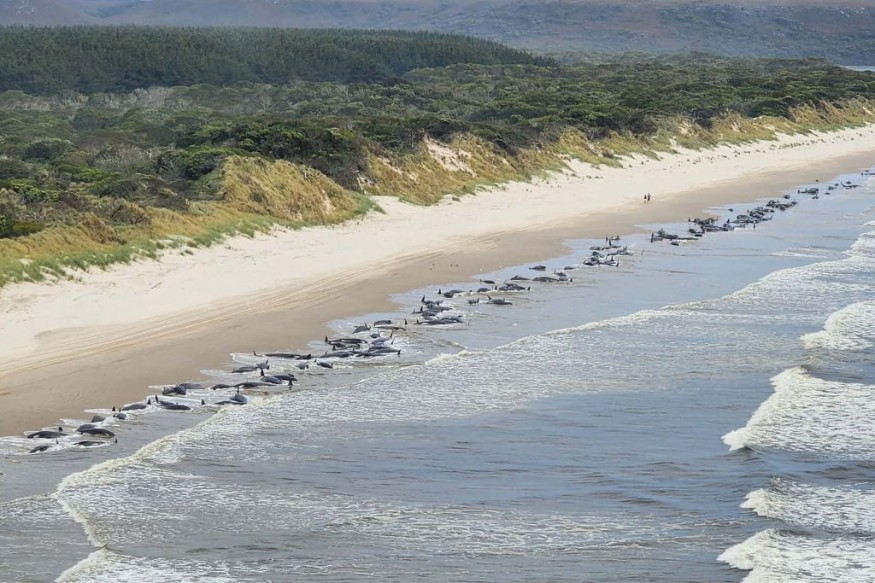
Another stranding involving 250 number of whales were discovered on remote New Zealand islands.
With a similar stranding event just days ago, the number of stranded mammals on the Chatham Islands was brought to around 500 and are "likely to die", The Guardian reported. The first 250 whales ended up dying or being euthanized after a nearby bleaching.
Project Jonah aims to mobilize marine rescues but considered it "too dangerous" to actively refloat stranded whales because of the active shark population in Chatham Islands. The general manager of Project Jonah, Daren Grover, said unless the mammals are naturally refloated by the tides, all of them are not likely to survive and may have to be euthanized.
"There simply aren't the networks of people or the availability of people to be able to attend any refloat of any surviving whales out there. There's a population of less than 40 people."
The islands were in fact "incredibly remote", and the information of 250 whales stranding on their shores is just unimaginable.
A Tragedy Almost Beyond Imagination
While efforts are being made to remedy the situation, attempts of whale rescues are just highly dangerous due to Chathams' shark population.
Dead whales on the beach or in the shallows only attract great white sharks more which are already known to frequent the coastal waters off the Chathams. "So any human going out there attempting to be in among the whales and refloating, they are at a much higher elevated risk of being attacked," Grover said.
According to BBC, the mass stranding at a New Zealand beach have been known to be a notorious spot for whale deaths. However, authorities say whale strandings are unfortunate but they are a natural phenomenon.
Given the area's topography, it has been known as one of the stranding hotspots, but they still go through periods when they don't have any.
"That's just the way things go," said rescuer Dave Winterburn from the Department of Conservation.
The "Prolific Stranders"
According to the Department of Conservation, the whale species were described as "prolific stranders" and the reason behind mass pilot whale strandings is not clear. However, one of the multiple causes could be related to cyclical changes in ocean temperatures that may have pushed them closer to shore.
Prof Karen Stockin, an expert on whale and dolphin strandings at Massey University in New Zealand confirms that pilot whales are highly social and cohesive beings that if one is debilitated or comes too close to shore, hundreds can follow.
The stranding hotspot recorded the biggest stranding in New Zealand history, with an estimated 1,000 pilot whales in 1918.
With regards to the latest stranding, the department team says the whales are probably getting euthanized instead of leaving them there in distress.
As reported less than a month ago, a similar number of pilot whales died on the coast of Tasmania where conservation department workers had to euthanize more than 200 whales. It was mentioned that a trained team was tasked to euthanize them to "prevent further suffering."
Related article : The Deepest and Darkest Spots In the World's Oceans
© 2025 NatureWorldNews.com All rights reserved. Do not reproduce without permission.





